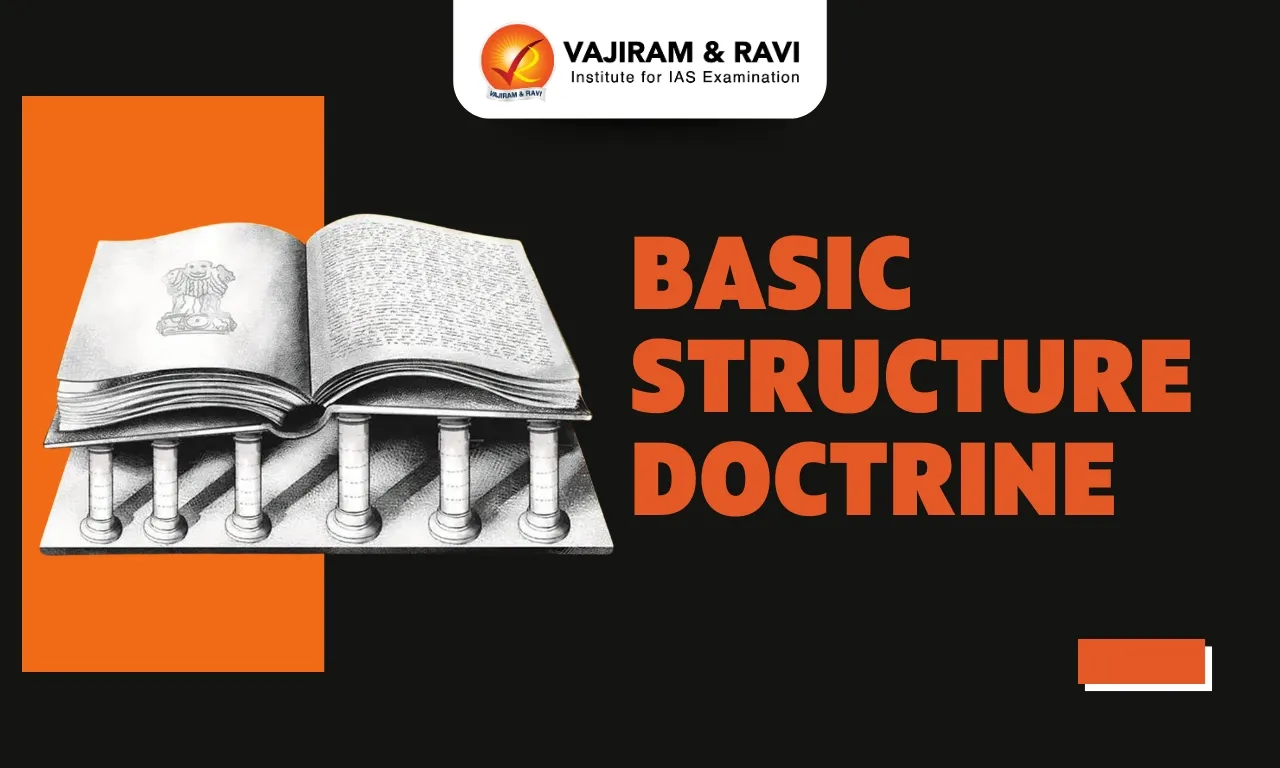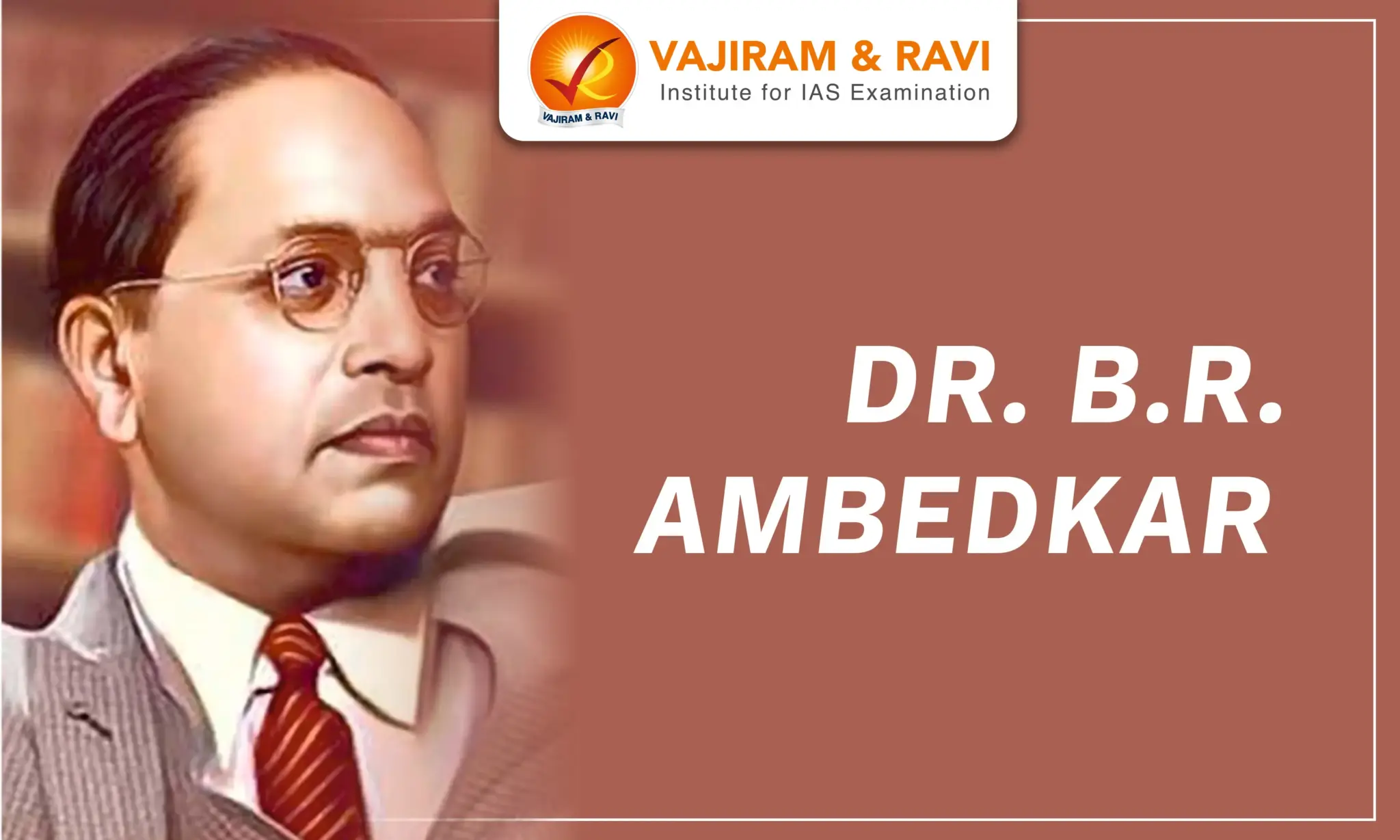The Basic Structure Doctrine is a crucial legal principle that has shaped the interpretation of India's Constitution. Emerging from the landmark Kesavananda Bharati case, this doctrine asserts that there are fundamental features of the Constitution that cannot be altered by any amendments made by the Parliament. It safeguards the essential principles and values that reflect the vision of the framers, ensuring that the core structure of the Constitution remains intact.
Over time, the Basic Structure Doctrine has been reinforced by significant judgments from the Supreme Court, which have consistently upheld its importance in protecting the Constitution's integrity. Despite its critical role, the doctrine has also faced criticism, particularly regarding its potential to limit parliamentary sovereignty and the scope of constitutional amendments.
Basic Structure Doctrine Meaning
The Basic Structure Doctrine, established by the Indian judiciary in the 1973 Kesavananda Bharati case, holds that certain fundamental features of the Indian Constitution cannot be amended by Parliament, even under Article 368.
- While its specific elements evolve, commonly accepted ones include the supremacy of the Constitution, the rule of law, separation of powers, judicial review, federalism, and secularism.
- This doctrine safeguards against arbitrary amendments, protecting foundational values and ensuring the Constitution's stability.
Evolution of Basic Structure Doctrine
The Basic Structure Doctrine, introduced in the Kesavananda Bharati judgment, revolutionized the interpretation of constitutional amendments. By 1971, 23 amendments raised concerns about alterations to fundamental provisions. The 24th, 25th, and 29th Amendments sought to limit judicial review and restrict fundamental rights. To address these, the Supreme Court upheld the Constitution's core integrity, tracing the doctrine's evolution to the right to property and the First Constitutional Amendment Act of 1951.
Basic Structure Doctrine Cases
The Basic Structure Doctrine is a judicial principle in Indian constitutional law that prevents the Parliament from altering the fundamental framework of the Constitution. Here are some landmark cases related to this doctrine:
- Shankari Prasad vs Union of India (1951): The Supreme Court upheld the First Amendment Act, asserting that Parliament could amend the Constitution, including fundamental rights, under Article 368.
- Sajjan Singh vs State of Rajasthan (1965): The Court upheld the Seventeenth Amendment Act, confirming Parliament’s power to amend fundamental rights but faced dissent asserting inherent immutability.
- Golaknath vs State of Punjab (1967): The Court ruled Parliament could not amend fundamental rights, declaring constitutional amendments as "laws" subject to Article 13’s judicial review.
- 24th Constitutional Amendment Act (1971): Parliament restored its authority to amend any part of the Constitution, overriding Golaknath’s restrictions, and made presidential assent mandatory.
- Kesavananda Bharati vs State of Kerala (1973): The Court upheld Parliament's amendment power but introduced the basic structure doctrine, limiting amendments that undermine constitutional principles.
- Indira Nehru Gandhi vs Raj Narain (1975): The Court invalidated the 39th Amendment's exclusion of election disputes from judicial review, reinforcing the basic structure doctrine.
- 42nd Constitutional Amendment Act (1976): Parliament claimed unlimited amendment powers, barring judicial review, but later provisions limiting judicial review were invalidated by the Supreme Court.
- Minerva Mills vs Union of India (1980): The Court invalidated parts of the 42nd Amendment, affirming judicial review as integral to the Constitution's basic structure.
- Waman Rao vs Union of India (1981): The Court upheld the Ninth Schedule's protection for pre-1973 laws but subjected post-Kesavananda Bharati laws to judicial review.
- Indra Sawhney vs Union of India (1992): The Court upheld 27% OBC reservations, capped total reservations at 50%, and emphasized equality as part of the basic structure.
- Kihoto Hollohan vs Zachillhu (1993): The Court upheld the Tenth Schedule on defection but allowed judicial review, adding free elections and democracy to the basic structure.
- S.R. Bommai vs Union of India (1994): Declared Federalism, Secularism, and Democracy as the Constitution’s basic structure and made President’s Rule subject to judicial review.
- IR Coelho vs State of Tamil Nadu (2007): The Court ruled laws in the Ninth Schedule are judicially reviewable if they violate the basic structure or fundamental rights.
Elements of the Basic Structure
The Elements of the Basic Structure Doctrine are fundamental principles that protect the core of the Constitution, ensuring that its essence remains intact despite amendments. While Parliament has the power to amend various parts of the Constitution, including Fundamental Rights, it cannot alter the 'basic structure.' Although the Supreme Court has not explicitly defined these components, numerous judgments have identified the following key elements that form the foundation of the Constitution's structure.
- Secularism
- Supremacy of the Constitution
- Sovereign, democratic, and republican nature of the Indian polity
- Independence of Judiciary
- Federalism
- Unity and integrity of the nation
- Freedom and dignity of the individual
- Powers of the Supreme Court under Articles 32, 136, 141 and 142.
- Welfare state
- Principle of equality
- The rule of law
- Powers of the High Courts under Articles 226 and 227
- Judicial review
- Free and fair elections
- Harmony and balance between FR and DPSPs
- Limited power of Parliament to amend the Constitution
- Separation of powers
- Parliamentary system
- Principles underlying Fundamental Rights
Significance of the Basic Structure Doctrine
The significance of the Basic Structure Doctrine in Indian constitutional law is profound. It has safeguarded fundamental rights, maintained the balance of power, and ensured that constitutional amendments do not undermine the core values of democracy, secularism, and federalism. Through its application, the doctrine has been crucial in ensuring the following factors:
- Promotes Constitutional Ideals: Basic Structure Seeks to preserve constitutional principles and Basic ideals envisioned by the founding fathers.
- Maintains Supremacy of the Constitution: The doctrine has helped to maintain the supremacy of the Constitution and has prevented its destruction by a temporary majority in Parliament.
- Separation of powers: Basic Structure strengthens our democracy by delineating a true separation of power where the Judiciary is independent of the other two organs.
- Granville Austin argues that with Basic Structure Doctrine, a balance has been reached between the responsibilities of Parliament and the Supreme Court for protecting the seamless web of the Indian Constitution.
- Protects Fundamental Rights: Basic Structure protects the citizens' fundamental rights against the legislature's arbitrariness and authoritarianism.
- Constitution as a living document: Being dynamic in nature, it is more progressive and open to changes in time, making the Constitution a living document.
- Judicial Activism: It has encouraged judicial activism in India, enabling the judiciary to strike down amendments that go against the Constitution's core and act as a check on the legislature and executive.
Basic Structure Doctrine Criticism
Although the Basic Structure Doctrine has been widely accepted and upheld by subsequent court decisions, its application and interpretation have been criticized on the following grounds:
- Inconsistent with the principle of separation of powers: A system of checks and balances is healthy only when the duties of one branch are not usurped by another. A court may have the power to review but not rewrite a constitutional amendment.
- Vagueness and elusiveness of the Basic Features of the Constitution: There is no definite elucidation on what exactly constitutes Basic Structure, thereby making the doctrine ambiguous.
- Translates judiciary into the third decisive chamber of parliament: By invoking the Basic Structure doctrine, the Judiciary acts as the third house and thereby renders the work done by the Parliament meaningless.
- Judicial Overreach: Recently, the doctrine has been invoked in cases regarded as examples of judicial overreach. Ex: National Judicial Appointment Commission Act, 2014 was declared null and void by the Supreme Court by relying on this doctrine.
Last updated on November, 2025
→ Check out the latest UPSC Syllabus 2026 here.
→ Join Vajiram & Ravi’s Interview Guidance Programme for expert help to crack your final UPSC stage.
→ UPSC Mains Result 2025 is now out.
→ UPSC Notification 2026 is scheduled to be released on January 14, 2026.
→ UPSC Calendar 2026 is released on 15th May, 2025.
→ The UPSC Vacancy 2025 were released 1129, out of which 979 were for UPSC CSE and remaining 150 are for UPSC IFoS.
→ UPSC Prelims 2026 will be conducted on 24th May, 2026 & UPSC Mains 2026 will be conducted on 21st August 2026.
→ The UPSC Selection Process is of 3 stages-Prelims, Mains and Interview.
→ UPSC Result 2024 is released with latest UPSC Marksheet 2024. Check Now!
→ UPSC Prelims Result 2025 is out now for the CSE held on 25 May 2025.
→ UPSC Toppers List 2024 is released now. Shakti Dubey is UPSC AIR 1 2024 Topper.
→ UPSC Prelims Question Paper 2025 and Unofficial Prelims Answer Key 2025 are available now.
→ UPSC Mains Question Paper 2025 is out for Essay, GS 1, 2, 3 & GS 4.
→ UPSC Mains Indian Language Question Paper 2025 is now out.
→ UPSC Mains Optional Question Paper 2025 is now out.
→ Also check Best IAS Coaching in Delhi
Basic Structure Doctrine FAQs
Q1. What is the Basic Structure Doctrine?+
Q2. What is the significance of the Basic Structure Doctrine in Indian constitutional law?+
Q3. Which case established the Basic Structure Doctrine in India?+
Q4. What are the criticisms of basic structure doctrine?+
Q5. . Can the Basic Structure of the Constitution be amended?+

















